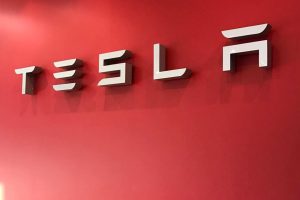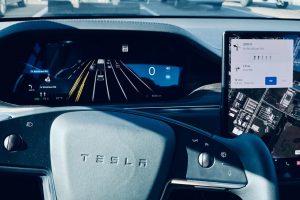Tesla CEO Elon Musk said on Thursday that the company’s new all-electric vehicle factory in Texas will require an investment of more than $10 billion over time. The Austin gigafactory (Tesla Giga Texas), located close to the airport, is a central element of planned company development.
The newly announced cost estimate is consistent with the trajectory of Tesla Gigafactory 1 in Nevada, which the company originally envisioned being “built in phases” so that Tesla could begin “manufacturing immediately inside the finished sections and continue to expand thereafter.”
But $10 billion? Is that price tag hyperbole?
It might be easy to say so, until we look at recent news from Rivian that it plans to spend $5 billion to build its second factory, this time in Georgia. The New York Times reports that Rivian’s new plant, east of Atlanta in Morgan and Walton counties, will have the capacity to produce up to 400,000 vehicles a year. That is fewer than the Giga Texas calculations. The Rivian Georgia plant is expected to eventually employ 7,500 people — again, fewer than the total estimates for direct and indirect job creation at Giga Texas.
$10 Billion Investment over the Lifespan of the Austin Gigafactory
The Tesla Austin Gigafactory, located in Travis County, Texas, was first announced in 2020, and earlier this month Tesla added that it had moved its Palo Alto, California, headquarters to Austin. The 5 facilities at its Austin Gigafactory are important as symbolism to the reorientation and core focus of the Tesla organization. The public face of the move is important, as shifting Tesla’s headquarters to Texas may benefit Musk personally more than his company — Texas has no income tax, and California’s income tax tops out at 13.3%. The price of Tesla shares has been on a roller coaster this month as Musk buys and sells his Tesla stock holdings to gain the funds necessary to pay his end-of-year tax bill.
Meanwhile, the company is expected to receive nearly $65 million in local tax rebates for the plant.
Such behind-the-scenes rationale, though, fails to illuminate the scope and significance of the Austin gigafactory. It is designed to have a combined square footage of nearly 4.3 million (0.4 square kilometer) and cost a combined $1.06 billion, according to November filings submitted to the Texas Department of Licensing and Regulation (TDLR). The filings outlined Tesla’s spending on various manufacturing capabilities, and the company said at the time it plans to complete construction of its general assembly, paint, casting, stamping, and body shop facilities by December 31.
The filings indicated a budget for each section.
- General assembly: $493 million.
- Paint: $126 million.
- Casting $109 million.
- Stamping: $150 million.
- Body-in-white: $182 million.
The Austin Gigafactory will initially produce the Model Y with anticipated 500,000 units annually. The plan is to eventually build out to include the highly anticipated Cybertruck pickup and Semi long-haul truck. Volume production of the Tesla Semi is expected to begin in 2023 at the new gigafactory.
With expected generation of at least 20,000 direct jobs and at least 100,000 indirect jobs, the Austin Gigafactory “is progressing as planned,” Tesla said in a shareholder slide deck in October. “We are in the process of commissioning equipment and fabricating our first pre-production vehicles.”
A battery factory nearby will manufacture the 4680 cells for the battery packs that power the Semi. “The 4680 in-house cell project continues to progress. We are producing an increasing number of battery packs for testing purposes, and so far, the test results meet our current expectations. Front and rear body castings, both needed for our structural battery pack architecture, are being produced at Gigafactory Texas.”
Texas was also the launch site for the company’s telematics insurance product in early October. Musk indicated in October that the company’s insurance premiums “will be able to more accurately reflect chances of a collision than any other insurance product on the market. Additionally, we will proactively communicate to the user what driving adjustments need to be made to decrease probability of a collision.”
The Magnitude of Gigafactory Construction
The construction and end result of a Tesla Gigafactory is truly a sight to behold, as members of the CleanTechnica staff experienced in 2019 on a tour of the Fremont factory.
The Shanghai Gigafactory is another good example of a factory in a permanent construction and concurrent expansion process with associated rising costs. According to Tesla’s Q1 report, the Shanghai Gigafactory manufacturing capacity stands at 450,000 cars annually. Its Model Y production line has been upgraded, and with it are expectations that the production capacity will be further increased to a level of nearly 500,000 units. Reuters reported in November that Tesla plans to invest up to 1.2 billion yuan ($187.91 million) to expand production capacity at its Shanghai factory that will allow it to employ 4,000 more people at the site, citing the state-backed Beijing Daily newspaper as source.
Final Thoughts about the Austin Gigafactory
Tesla CEO Elon Musk is a different kind of leader than the automobile — or, really, any other industry — has known in a long time.
Austin is known as a relatively progressive location within the red state of Texas. Nonetheless, Austin has its problems. Since he was sworn in on January 1, the office of Travis County District Attorney José Garza has obtained indictments of 5 Austin police officers, two county deputies, an assistant county attorney, and a sheriff on charges including tampering with evidence and murder. The office is also prosecuting three additional officers who were indicted during the prior district attorney’s administration. And in many other criminal cases, he has sought sentences that emphasize rehabilitation over punishment.
Texas is the state that bans state investments in businesses that cut ties with the oil and gas industry. It forces the state’s pension funds to divest from companies that exclude fossil fuel companies. A Texas Republican actually lobbied to the Securities and Exchange Commission (SEC), US President Joe Biden, and Congress to issue rules regulating sustainability-focused investments so they don’t discriminate against oil and gas producers.
Calling him “somewhat haughty,” our own CleanTechnica writer, Steve Hanley, noted that Musk has declined the opportunity for a government subsidy on the new Giga Berlin. “It has always been Tesla’s view that all subsidies should be eliminated. But that must include the massive subsidies for oil & gas. For some reason, governments don’t want to do that,” Musk said. Hmmm. Local tax breaks must be different….
Tesla expansion has become nearly legendary if extremely complex. It has extended to new enterprises, grabbed a stake in key infrastructure sectors, worked to decentralize power distribution, and now offers a new alternative to today’s utility industry. Tesla’s end products are state-of-the-technological-art — all of which interconnect in a flywheel that incites consumer allegiance across multiple sectors and keeps those consumers coming back to Tesla for more. Welcome to the family, Austin.





